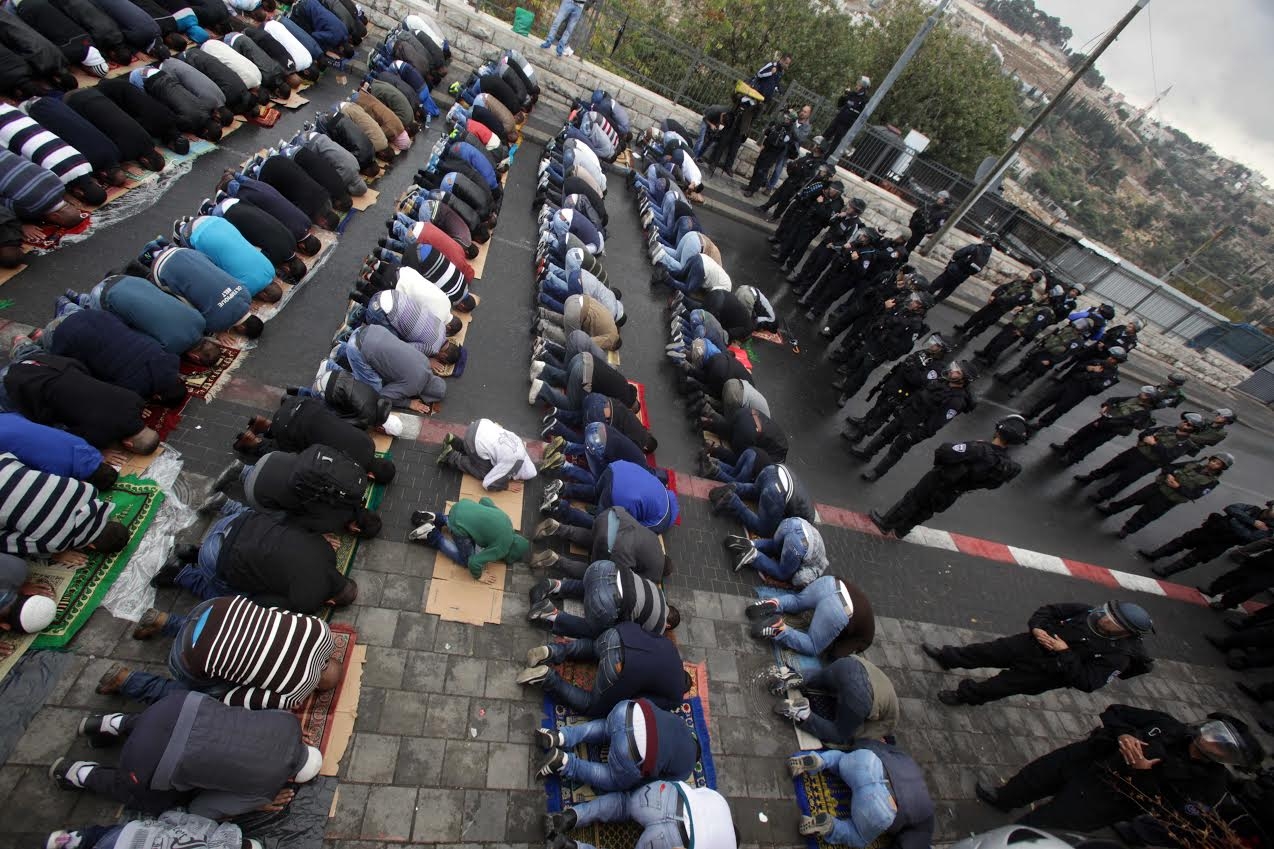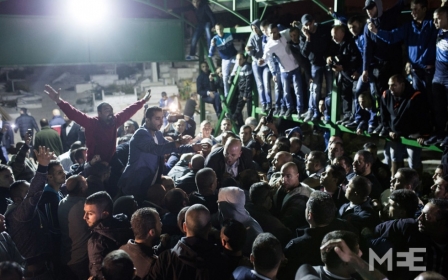No freedom of religion for Palestinians in the Holy City

In a tumultuous 48 hours, Jerusalem has seen the near-assassination of a right-wing activist, the killing of a Palestinian suspect and, with the unprecedented total closure of Al-Aqsa mosque yesterday, an act Mahmoud Abbas deemed a "declaration of war.”
It comes as no surprise, then, that the city was packed with police and military today. Following the partial reopening of al-Aqsa itself, both the compound and the streets that lead to it bristled with Israeli forces: from the beginning of the day heavily armed soldiers stood guard at every corner of East Jerusalem, and each gate of the old city was barricaded by checkpoints. Until 2:30 p.m. in the afternoon, no Palestinian man under the age of fifty was permitted to enter the city walls, and while tourists entered the gates freely, many residents of Jerusalem - including several young teenagers - were turned away.
The heavy-handed approach seems to have worked. The situation in the old city, as police chief, Micky Rosenfeld tweeted, was “relatively quiet due to the large police deployment,” and reports indicate that some 3,000 personnel, three times the usual number, were stationed in the city this morning. The crackdown, too, was strengthened by what might have been an equally effective suppressant: the first real rain of winter, which fell in a downpour on the slippery alleyways of the old city.
But while extreme violence may have been kept at bay, those kept out of al-Aqsa by the crackdown had no intention of slipping by unnoticed. Gathering for the afternoon prayer on the roads that lead toward the walls, hundreds of Muslim Palestinians prayed on the streets, their rugs set out in neat rows. This worship has become a weekly act of collective protest in occupied Jerusalem, performed publicly, in part, to highlight continued Palestinian exclusion from al-Aqsa, the third holiest site in Islam.
Wadi Joz, at the northeast edge of the old city, was among the most volatile and tense neighbourhoods of the day. Several hundred men here listened to a Friday sermon delivered on the main road, under the gaze of a few dozen police heavily armed with conspicuous, blue-tipped rubber bullets and sound bombs. A fortified “skunk truck,” equipped to spray the crowd with foul-smelling liquid should the unrest escalate, reminded attendees of some of the more unpleasant consequences of unrest.
In a city where tension has been mounting for months, the religious lesson delivered to the crowd was fitting and portentous. Referring of the tumultuous events of recent days, and years of occupation, it described the suffering of Palestinians under the excessive Israeli power and promised a change to the status quo. The message to Israel implied that if the power balance shifted, it would not be dealt with kindly.
Later in the day, small clashes in Wadi Joz were reportedly suppressed by Israeli forces. The old city, in some places already running with water several inches deep after the first winter rain, was quieter. Palestinian men under fifty who live in the old city were today allowed to pass inside the walls, but this didn't mean permission to pray at al-Aqsa, and those who live only a few hundred metres from the Mosque also prayed in the streets.
“Being banned from the mosque, it's like you're cutting the air from my lungs,” Rami, 37, told Middle East Eye. “Imagine how you would feel if you are a Christian and you aren't allowed to go to the church. In all the world you are able to pray freely, but not here, not for Muslims in Jerusalem.”
Rami said he hopes that Muslims will one day pray freely in al-Aqsa, but puts his faith in the hands of God. In the political world, he anticipates more unrest. “All the people in Jerusalem feel angry and frustrated, we don't know why they are doing this,” he explained. “The government is making a big mistake in doing this. If they are preventing the Muslims from praying than this will return to them a big crash.”
Rami, who prayed in the streets of the old city today, feels anxious about a particular precedent for religious hotspots in Palestine – one he believes may indicate what the near future holds for Jerusalem's holiest Muslim site. “Today we look at the Ibrahimi Mosque in Hebron, and we think it is similar to what's happening at al-Aqsa,” Ziad Khatab, 58, told MEE. In the West Bank city of Hebron, he explains, Israeli settlement enclaves have fractured the Palestinian community and the famous mosque is subject to extremely tight security from the Israeli army.
“There, the mosque is separated," he explained. “There's cameras and soldiers there, and it doesn't feel like a holy place. Today, we're seeing tear gas, sound bombs, rubber bullets on at al-Aqsa, there's students that study there, and they can't learn. It's becoming a similar situation to Hebron. I'm a religious man, and I know it's not right. Why close the doors to us? It's the Muslims that suffer most in this city.”
Khatab's small shop on the Via Dolorosa, stacked with dusty coke cans and chocolate snacks, is at the heart of Jerusalem's tourist industry: the parrot in a cage on the cash desk, he says, speaks words in five different languages. But the violence of recent weeks has had a depressing impact on business. Other shop owners agree. “The tourists don't feel safe when they come here. They see the violence and the soldiers, and tell their friends what's happening, and they don't want to come,” 32 year-old Haitham, who owns a packed shop of religious trinkets, says. “It's Friday today, so it's like a weekend for us, and local people want to go shopping too. The soldiers don't let them into the old city, these people that we need for our business.”
On top of the restrictions and violence, the economic strain of Jerusalem is threatening to force people into despair, or flight. “Every year this conflict becomes worse," Haitham says. "I'm sorry to say it, but it's like living in a prison here.”
The tension described by Haitham, as well as the recent Palestinian deaths and growing crackdowns in the city, meant today was promised as a “day of rage” in Jerusalem. While clashes took place in Wadi Joz, Qalandia and further afield in Hebron, heavy policing and heavy rain both appear to have dampened the uprising that was both hoped for and feared in this smouldering city.
But tonight, under a still-darkening sky, Jerusalem's residents continue to look to the golden dome of the Haram al-Sharif, at the barriers that prevent them from reaching it, and at the daily indignities of life in their home city. A fire may have been suppressed today, but the events of the last 48 hours have only piled fuel on what many say is an imminent and explosive blaze.
Middle East Eye propose une couverture et une analyse indépendantes et incomparables du Moyen-Orient, de l’Afrique du Nord et d’autres régions du monde. Pour en savoir plus sur la reprise de ce contenu et les frais qui s’appliquent, veuillez remplir ce formulaire [en anglais]. Pour en savoir plus sur MEE, cliquez ici [en anglais].




